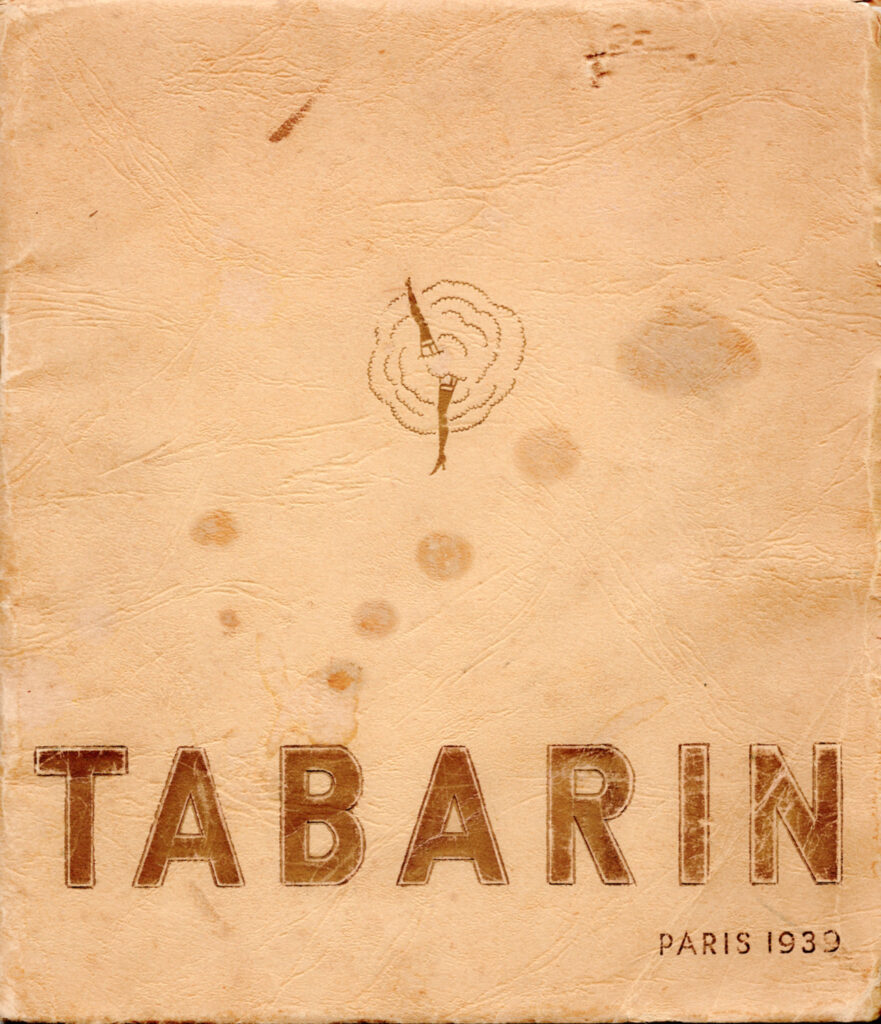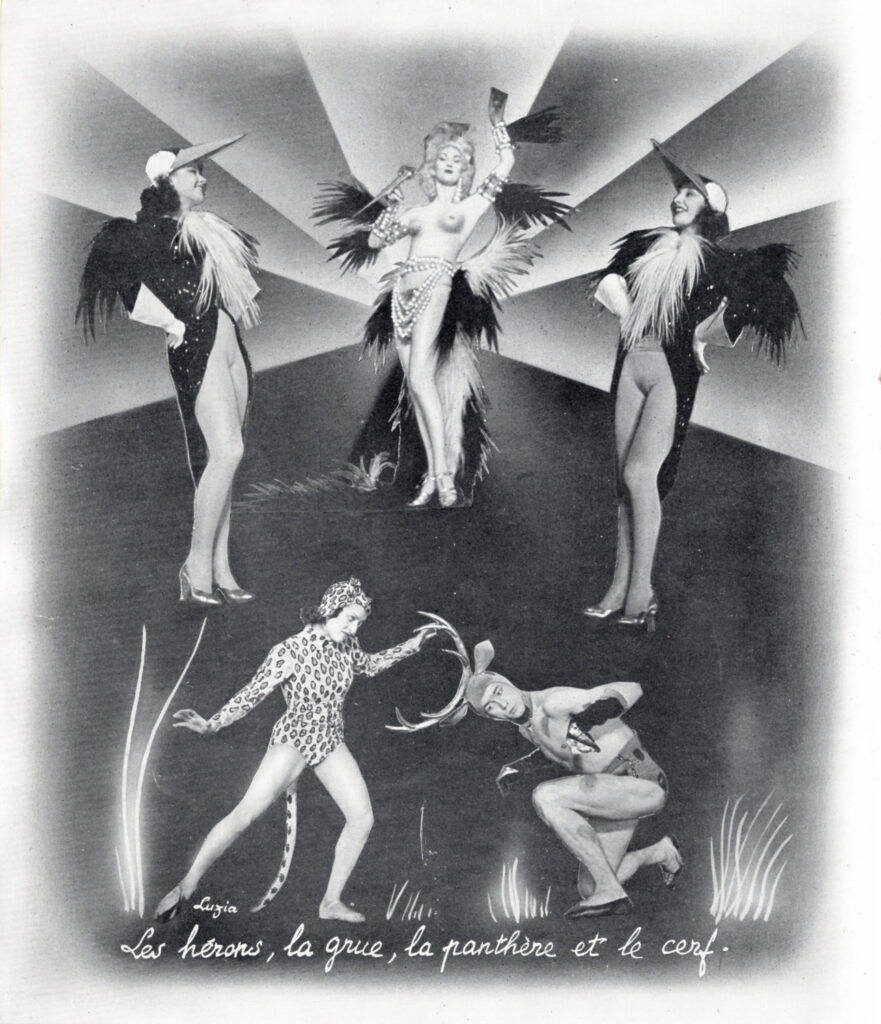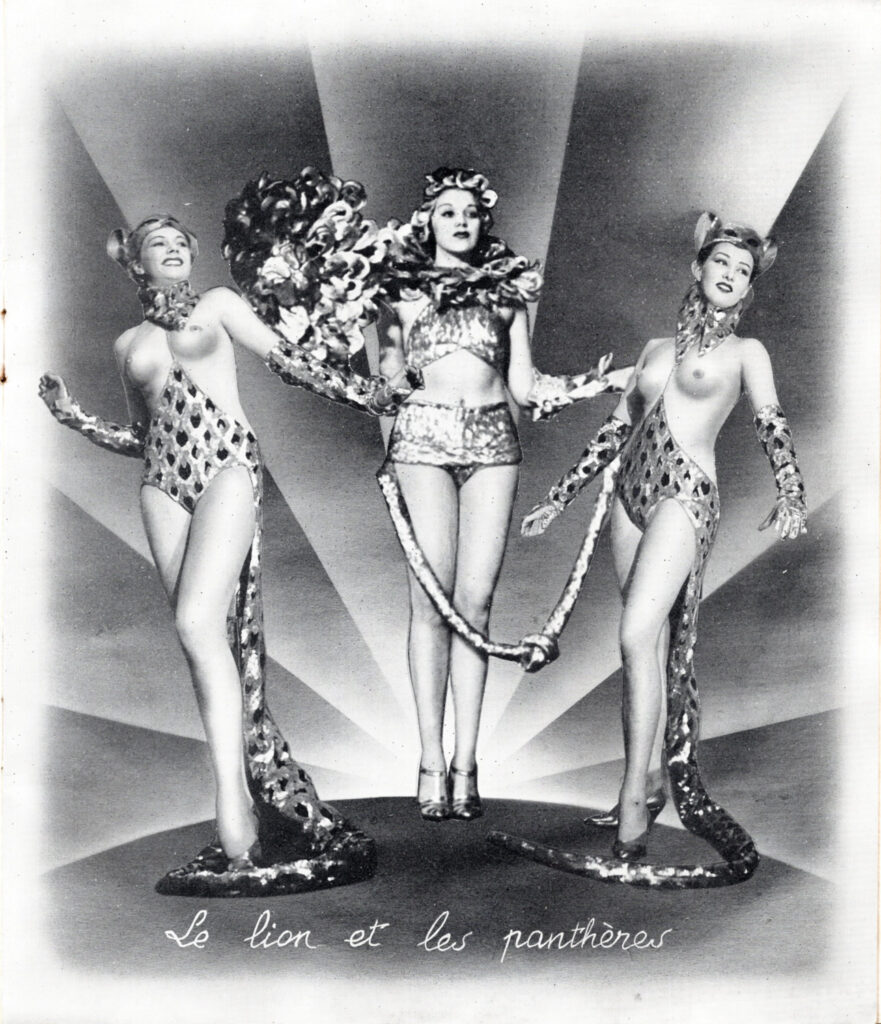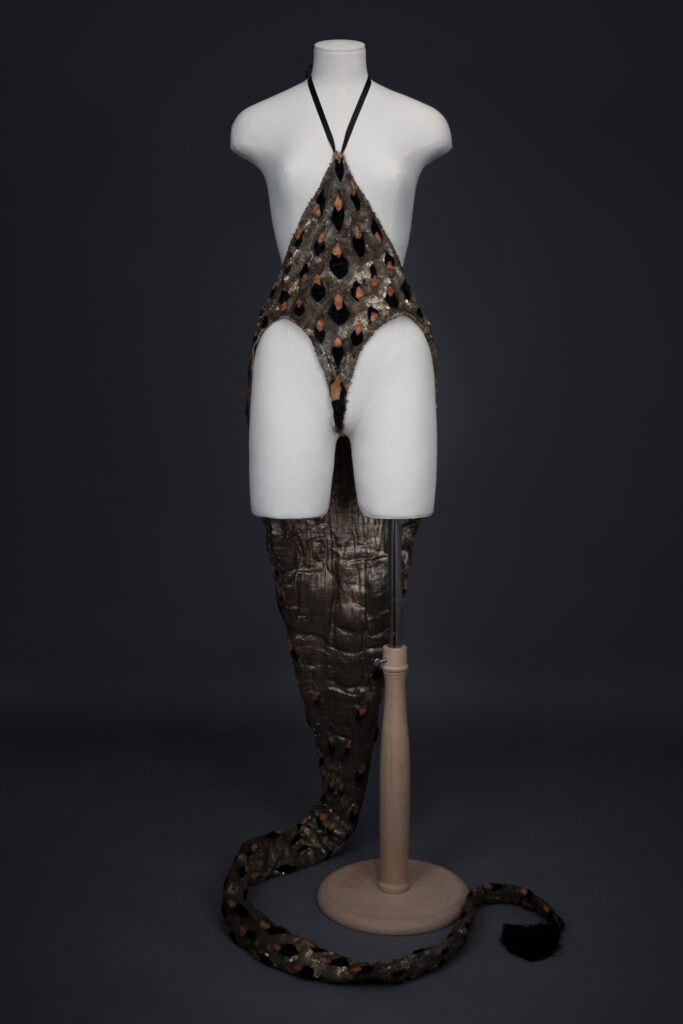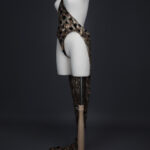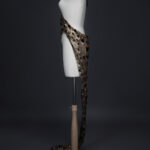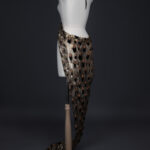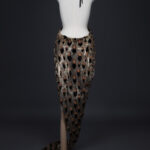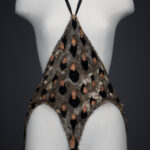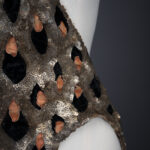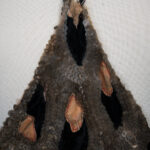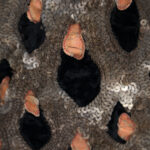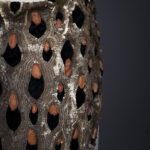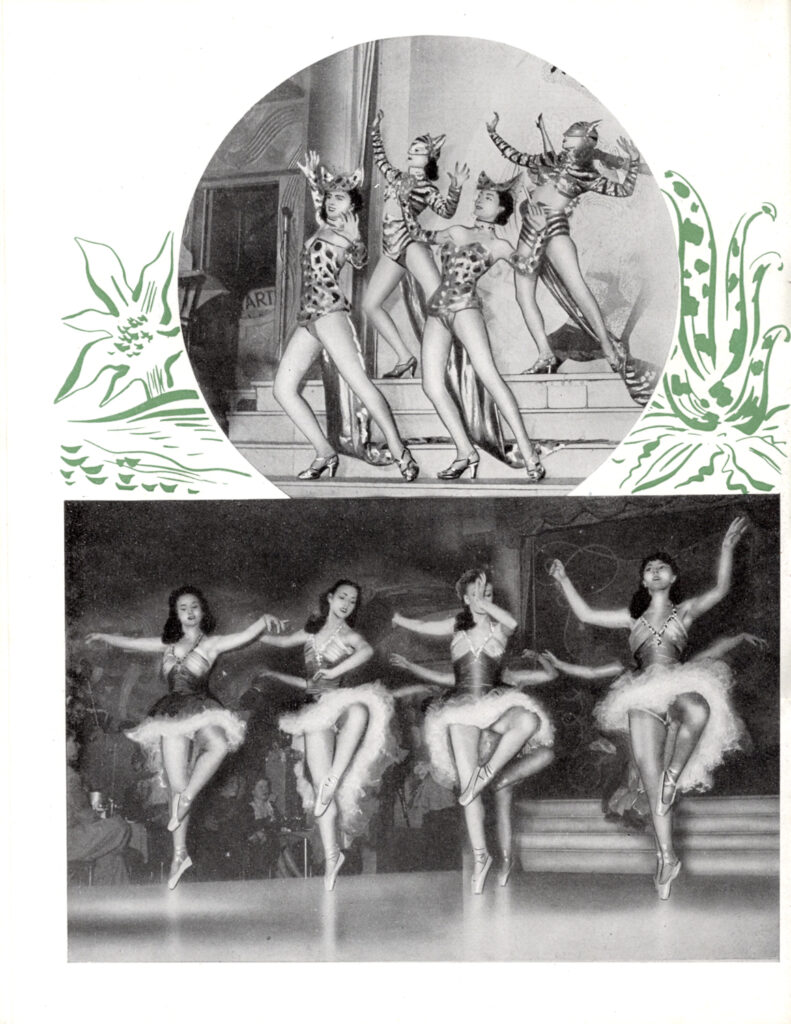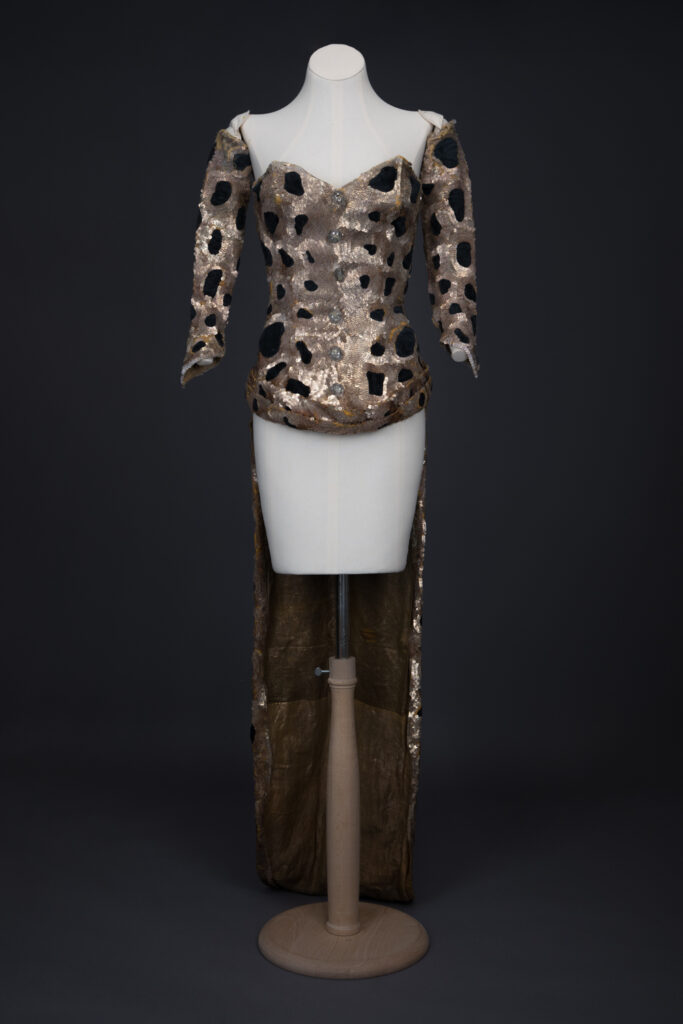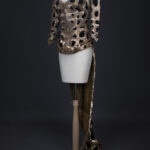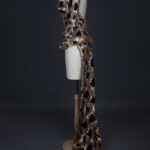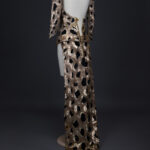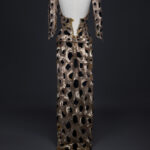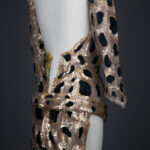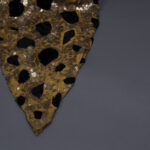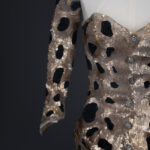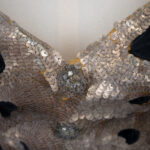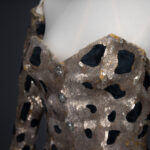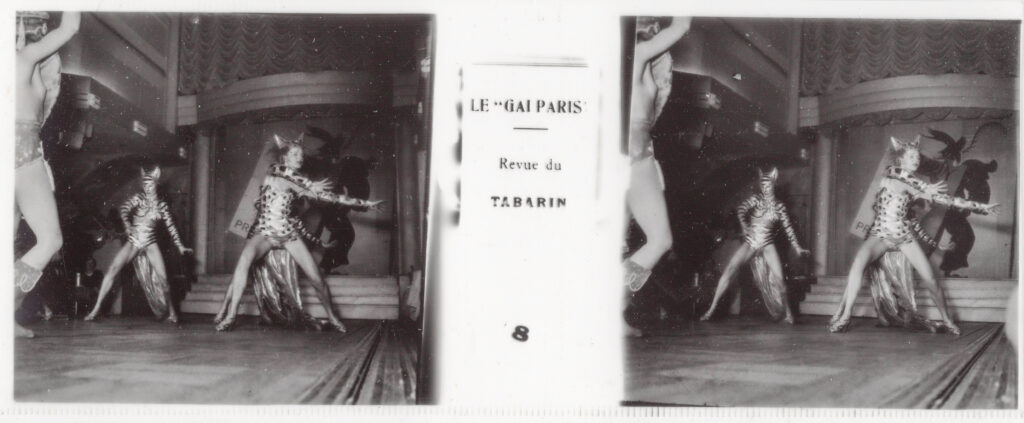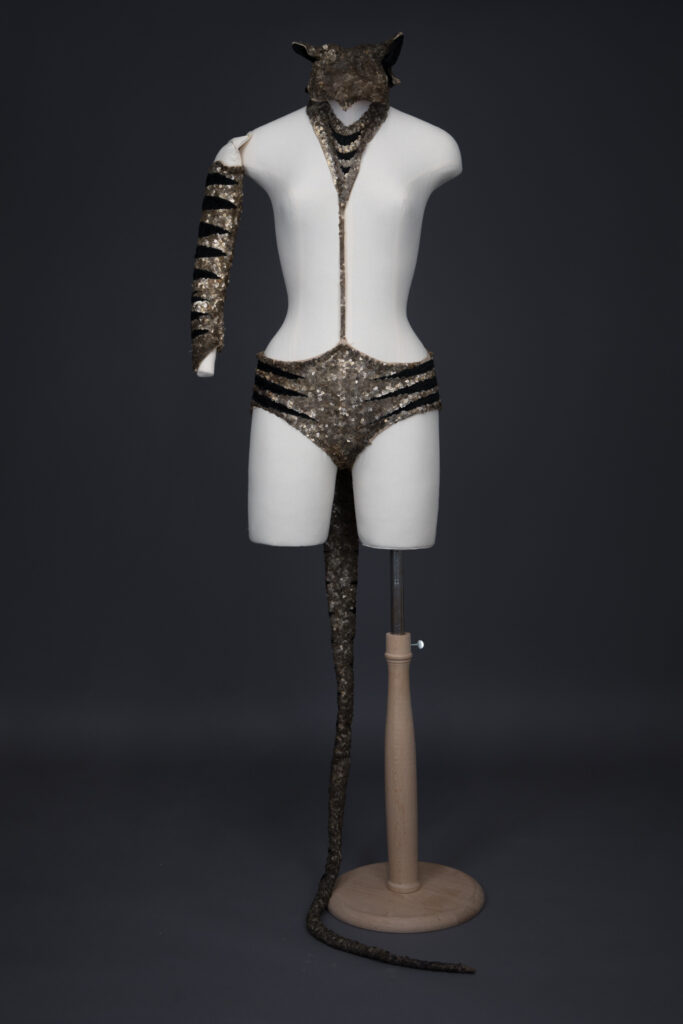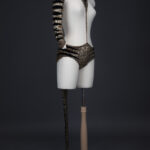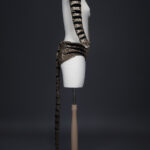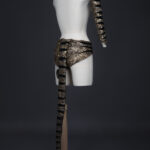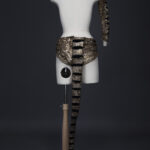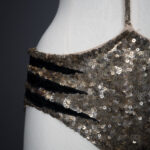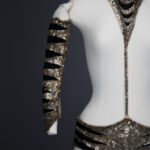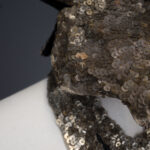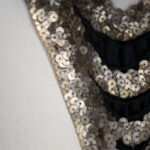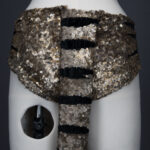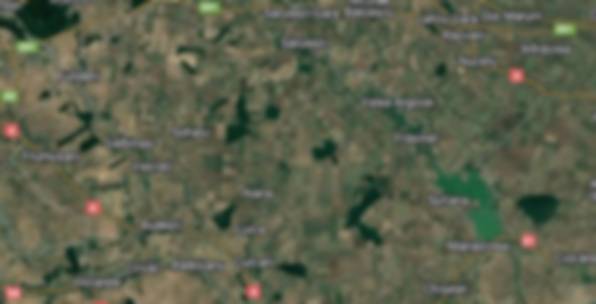By the time Erté began designing for Bal Tabarin in 1933, the “golden age” of Paris’s vibrant cabaret scene was in decline. Though today the Bal Tabarin name is largely forgotten in comparison to other venues like Moulin Rouge and Le Lido, it was still famed at the time for its association with the French cancan. As souvenir programmes and archival footage demonstrate, Tabarin dancers continued to put on a show–even during German occupation. French writer Robert Cardinne-Petit reviewed one 1941 production, writing, “One wonders how, in the current circumstances, unfavorable to such a riot of costumes, silks, and sequins, [director Pierre Sandrini] … was able to conjure up all these trappings of fantasy and dreams.” The spectacular costumes of which he spoke were designed by Erté and eventually collected by Pierre Sandrini, the last owner of Bal Tabarin, before some of them entered the Underpinnings Museum’s collection in 2024.
Chapter Three: Erté Pour Les Costumes

In spring of 1939, Bal Tabarin premiered a revue called Un Vrai Paradis—“a true paradise.” Presented by Pierre Sandrini and Pierre Dubout and directed by Sandrini, the production was divided into three acts: earthly paradise, paradise lost, and paradise regained. Erté is credited in the show’s 1939 programme for designing the costumes and sets. However, the outbreak of war caused Bal Tabarin to halt performances.
A 1939 souvenir album from Bal Tabarin features professional photographs from Un Vrai Paradis, showing off its many beautiful dancers and their risque costumes. This two-page spread features female dancers portraying les hérons, la grue (the crane), les panthères, and le lion. The programme lists the panthère performers as Luzia, Betty, and Lydia, and the lion as Erica.
'La Panthère' Sequinned Halter Bodysuit With Tail By Erté
Date: c. 1939
Origin: France
Fabric: Silk lamé, silk velvet, metal and gelatin sequins
Brand: Erté
Now in the Underpinnings Museum’s collection, this monokini-style panthère costume is likely one of those worn by dancers Betty and Lydia in the 1939 programme for Un Vrai Paradis. Its long, tasseled tail is visually aligned with many of Erté’s designs that featured sinuous trains. Notably, the costume’s spotted design features a darker outline and a lighter center, more closely resembling the fur of a leopard than an all-black panther. Erté’s affinity for leopards can also be seen in the L installment of his famous c. 1976-1977 alphabet series.
After twenty months as a soup kitchen for performers, Bal Tabarin resumed its production of Un Vrai Paradis while Paris was still under German occupation. One 1941 review praised the venue’s owners, writing “Un Vrai Paradis reappears at its home port … Decorated with fresh colors, adorned with new and sparkling costumes.” However, it appears that Erté’s original designs from 1939 were reused, as indicated by the photographs in this 1940-1941 programme.
Bal Tabarin Draws Record Crowds (1947) - British Pathé
Bal Tabarin continued to stage revues throughout the war years, and according to this newsreel by British Pathé, enjoyed high attendance from foreigners. The British speaker observes, “Famed in prewar days for its beautiful girls, we find the standard as high as ever… The Tabarin girls of 1947 still kick their legs in the air, and clothing coupons don’t seem to worry them.” Visiting the Parisian cabaret was clearly a form of escapism from wartime troubles. However, before France’s liberation in 1944, many of the attendees were likely German officers.
Erté last designed for Bal Tabarin in 1949, although programmes published as late as 1950 continued to attribute its costumes to him. A c. 1950 souvenir album for a revue called Reflets, French for “Reflections,” features a wide variety of fanciful costumes, including a group of two panthères (credited as Chrilou and Edwige) and two tigresses (credited as Martine and Michèle).
'Femme Panthère' Trained Bodice & Gauntlets By Erté
Date: 1949
Origin: France
Fabric: Silk lamé, silk velvet, cotton twill, metal and gelatin sequins
Brand: Erté
This bodice was worn by Bal Tabarin dancers portraying panthères, likely between 1949 and 1951. It features a sweetheart neckline, faux button embellishments at the center front, detached sleeves, and a dramatic ankle-length train at the back, resembling an undated costume illustration by Erté. The design of black velvet spots against the golden background of gelatin sequins is suggestive of cheetah fur.
As seen in this performance photograph, as well as the Reflets programme, the above panthère costume would have been completed with several accessories. It was originally worn with a collar necklace and panty, possibly of the same silk lamé as the lining of the train. It was topped off with a spotted headdress, complete with cat ears.
'La Tigresse' Sequinned Halter Knickers With Tail, Gauntlet & Hat By Erté
Date: c. 1949
Origin: France
Fabric: Cotton twill, silk velvet, metal and gelatin sequins
Brand: Erté
Of the three Erté costumes in our collection, this tigresse costume differs most from the existing photography. Photographs from c. 1949-1951 show dancing tigresses in high-waisted tiger-striped briefs with an attached train and long-sleeved, midriff-bearing bodices, accessorized with a headdress and attached mask. Perhaps Erté’s design was adapted to this more revealing version, recalling his earlier panthère design for Un Vrai Paradis.
Bal Tabarin Paris (1947) - British Pathé
Between 1933 and 1949, Erté costumed a great variety of acts at Bal Tabarin, featuring dancers clad in sheer and sparkling fabrics, incorporating spectacular props like carousel horses (seen in this video), gigantic chalices, and Venus-style seashells into their acts. Many of these sensual tropes continue to be referenced by burlesque performers today, including “Queen of Burlesque” Dita Von Teese.
After Pierre Sandrini’s death in 1949, his widow turned to Erté to recommend a new director. Unfortunately, Erté’s suggestion—British artist and producer Alec Shanks—did not work out, and Bal Tabarin ultimately closed in 1953. In his memoir, Erté recalled “the sad demise of the Tabarin,” which caused him to find new work at another Parisian cabaret. Today, the address where Bal Tabarin once stood is a commercial building housing several shops.
Bibliography
Primary
- Bal Tabarin Programme for Un Vrai Paradis. Paris, 1939.
- Bal Tabarin Programme for Un Vrai Paradis. Paris, 1940–41.
- Bal Tabarin Programme for Reflets. Paris, ca. 1950.
- Comoedia Illustré. Paris, 1913.
- Erté. Things I Remember: An Autobiography. New York: Quadrangle/New York Times Book Co., 1975.
- Harper’s Bazaar. 1920, 1922, 1940, 1982.
- Hearst’s International. New York, 1924.
- Le Théâtre. Paris, 1913.
- Le Monde. Paris, 1966.
- The Billboard, 1928.
- The Bystander, 1915.
- The Navy and Army Illustrated, 1905.
- New York Times, 1925.
- Morgan, William Yoast. A Jayhawker in Europe. Topeka: Crane & Co., 1911.
- “The Scandals of 1928.” Playbill for George White’s Scandals. New York, 1928.
- Stage: The Magazine of After-dark Entertainment, 1937.
- St. James’s Magazine, 1862.
- The Sioux City Journal, 1875.
- The Smart Set: A Magazine of Cleverness, 1920.
- The Times-Democrat. New Orleans, 1878.
- Vogue. New York: Condé Nast, 1940.
- Greer, Carl Richard, What a Buckeye Cover Man Saw in Europe and at Home. Ohio: Hill-Brown Printing Company, 1923.
Secondary
- Buckland, Fiona. The Showgirl Costume: An Illustrated History. Jefferson, NC: McFarland, 2006.
- Erté. Erté’s Theatrical Costumes in Full Color. Mineola, NY: Dover Publications Inc., 1979.
- “Erté: Leader of Art Deco, His Trail Through the Century.” Tokyo: Japan Planning Association Co., 1990.
- Valerie Steele, ed. Encyclopedia of Clothing and Fashion. 3 vols. New York: Charles Scribner’s Sons, 2005.
- Mackrell, Judith. Josephine’s Story. Pan Macmillan, 2013.
- Unruh, Delbert. Forgotten Designers: Costume Designers of American Broadway Revues and Musicals, 1900–1930. Meadville: Page Publishing, Inc., 2020.
- Unrue, Darlene Harbour, ed. Selected Letters of Katherine Anne Porter: Chronicles of a Modern Woman. Univ. Press of Mississippi, 2012.
- “Erté.” Encyclopedia of World Biography. Detroit: Gale, 2016.

